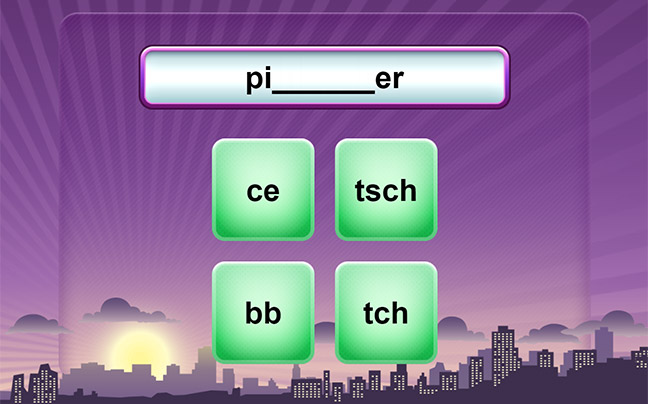Tim Rasinski is a renowned professor of literacy education whose research on reading fluency and word study has made him a literacy hero to many. Below, he shares his thoughts on foundational reading skills.

A strong foundation in reading is necessary to become a competent and proficient reader. In a previous post, I reported on a recent study that found that students who were proficient in the foundational competencies of word recognition, spelling, sight word reading, and fluency were 7 times more likely to also be proficient in overall reading achievement than students who have not achieved proficiency in the foundational competencies. Could it be that one of the reasons we continue to have nearly two-thirds of American fourth graders reading below a “proficient” level is insufficiently developed foundational reading skills?
In order to help students become proficient in the foundational reading skills, we need to know what they are so that we can teach them. So just what are the foundational reading skills? I think all of us would agree that the ability to decode words (phonics), encode words (spelling), and understand the meaning of words (vocabulary) are foundational to reading. VocabularySpellingCity does a great job of providing teachers, parents, and children with engaging activities for developing these essential competencies.

VocabularySpellingCity games, like Which Letter Team, allow students to work on foundational skills, such as phonics and spelling.
However, there are two other fluency foundational skills that often get less attention. The first of the fluency competencies is automaticity in word recognition. Automaticity refers to the ability to recognize words in print effortlessly. You are a superb example of automaticity. As you read this blog, my guess is that you are instantly and effortlessly decoding the words. Did you have to stop at any of the words to examine them, sound them out, or consider their meaning? My guess is you stopped very few times. Automaticity is so important because when you are effortless in word decoding, you are able to use your cognitive energy toward comprehending the message in the text. Think of students who might have to stop at every 10th word in a text to decode the pronunciation or meaning of the words. Although they may be able to analyze those words, their understanding of the overall text suffers since they have used up much of their cognitive energy in word analysis.
We often think that getting children to decode words accurately through phonics is sufficient for reading. It is not. The real goal should be accurate and automatic word recognition. Many of our students who struggle in reading may be accurate, but they have yet to achieve automaticity.
The second of the foundational fluency competencies is what has been termed prosody. Prosody in reading simply refers to the patterns of rhythm, stress, and intonation in reading orally. In other words, prosody in reading is a technical term for reading with expression. Readers who read with expression need to be monitoring the meaning of the passage they are reading in order to embed appropriate expression. Moreover, when one reads with good expression, their expression enhances the meaning of the text for themselves and anyone listening to them read. Have you ever listened to someone read in a word-by-word monotone voice? It was probably more difficult to understand their message than if they had read with good expression.
Now think of the children in our classrooms who do not read with good expression – they simply read to get the words out. They are likely to struggle with understanding the meaning of words. Indeed, many of our students who struggle in overall reading proficiency are not sufficiently expressive in their oral reading. The problem is that often little attention is given to expressive reading. If you are using a commercial program for reading instruction, check out the extent to which the program asks you to focus your instructional attention on developing expressive reading. Probably not much.
The research is very clear on these two fluency related foundational reading competencies. Students who are automatic in their word recognition and prosodic in oral reading tend to be more proficient in overall reading proficiency than students who have yet to develop automaticity and prosody. Instruction in these areas is clearly called for. In my upcoming blog posts, I will explore how we can help students develop these two additional and critical foundational reading competencies.
_________________________________________
Tim Rasinski is a professor of literacy education at Kent State University. His research on reading has been cited by the National Reading Panel and has been published in journals such as Reading Research Quarterly, The Reading Teacher, Reading Psychology, and the Journal of Educational Research. Read more about Rasinski here, or connect with him on Twitter @timrasinski1.
For more from Tim Rasinski, continue to follow us for his exclusive VocabularySpellingCity blog series and be sure to watch a video recording of his webinar “Automaticity (Fluency) in Word Learning Improves Comprehension”
Rasinski’s research on word fluency is cited in the report, “Applying Best Practices For Effective Vocabulary Instruction,” written by VocabularySpellingCity in partnership with McREL International.
